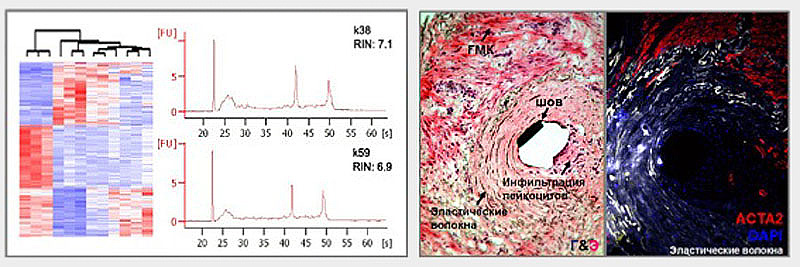Molecular mechanisms of restenosis and destabilization of atherosclerotic plaques
Atherosclerosis and its complications represent the major causes of mortality in the world. Atherosclerotic damages of different vascular districts have morphological and cellular-molecular differences that should be considered in developing new methods of differential diagnosis and therapy of atherosclerosis. Some of the stages in the atherosclerotic plaques development represent a special threat to the patient quality of life. They include plaque destabilization and restenosis. Behavior of smooth muscle cells has a particular meaning for the development of vascular complications. Activated smooth muscle cells can be a source of additional inflammatory signals, and due to proliferation participate in plaque stabilization or restenosis development. In this regard, the clarification of the molecular mechanisms that cause changes in the vascular smooth muscle cells phenotype is of particular interest.

Multicomponent database of clinical and molecular biological parameters of atherosclerotic plaques
Research work is aimed to reveal expression profiles of genes associated with the development of restenosis and destabilization of atherosclerotic plaques in patient arteries and in animal models of vascular injury, as well as prediction of key regulators of vascular cells fate using data from high-throughput experiments. Smooth muscle and endothelial cells co-culture model used to study the role of toll-like receptors in the development of inflammatory response of the vascular wall.
Studies in this area are carried out in collaboration with the Research Laboratory of Vascular Surgery of Federal Almazov Medical Research Centre and the Laboratory of Vascular Surgery Center of Molecular Medicine, Karolinska Medical Institute of Stockholm.
